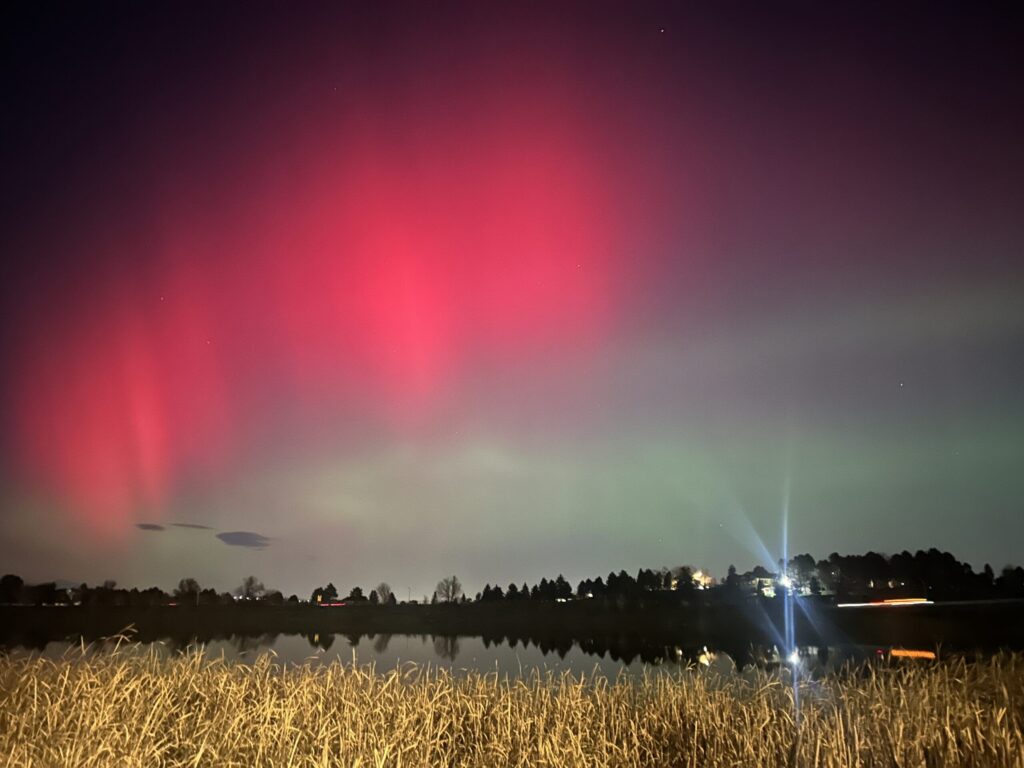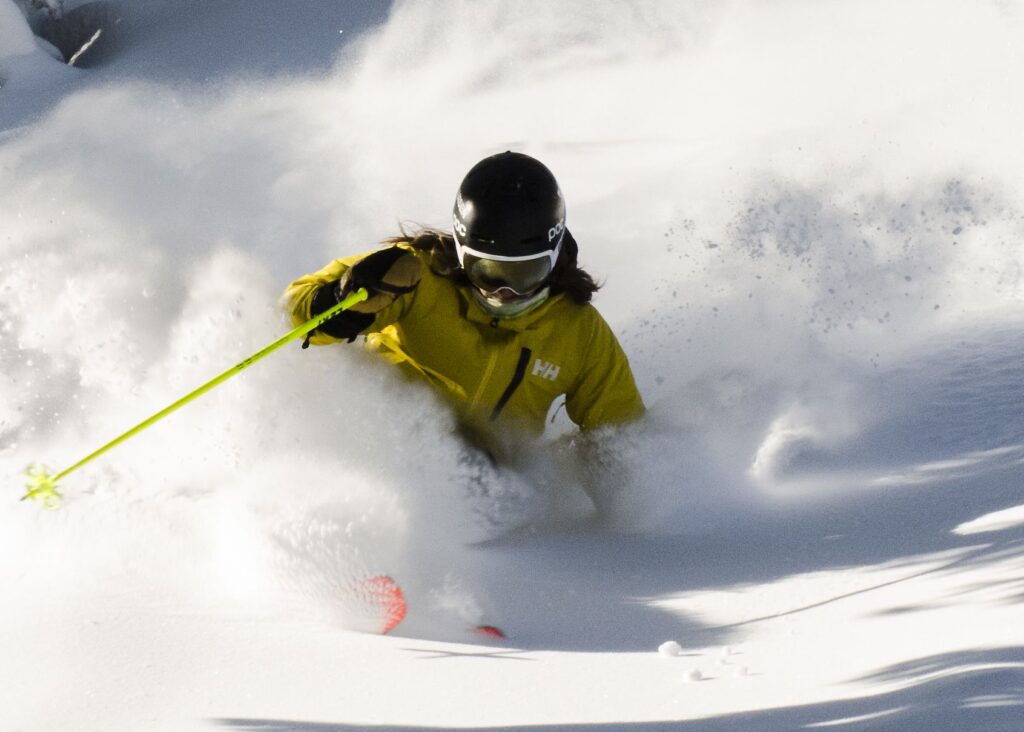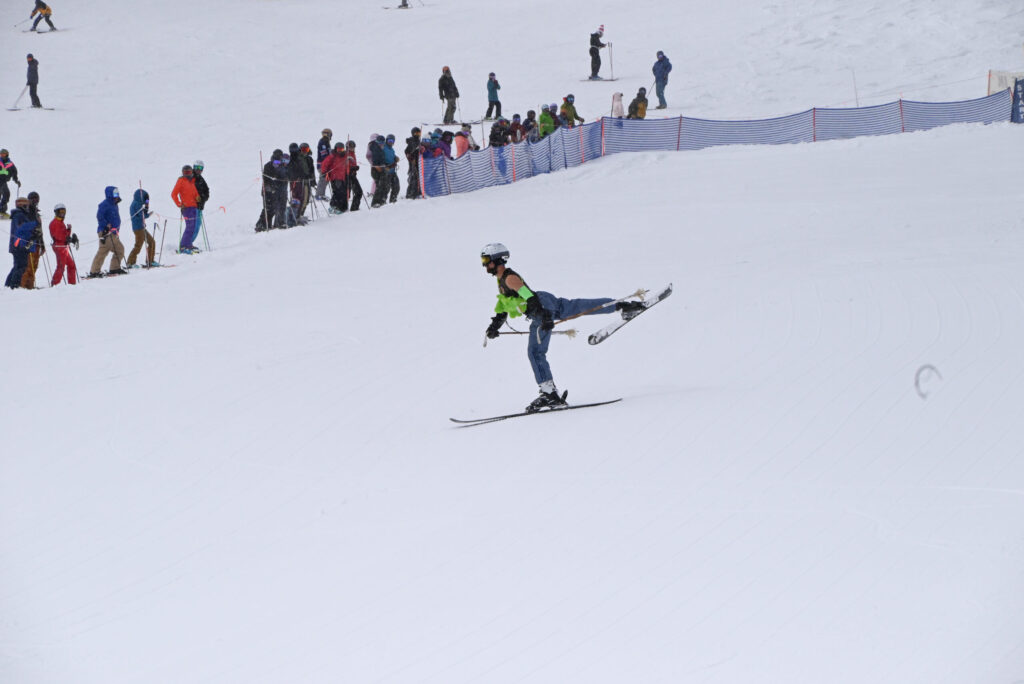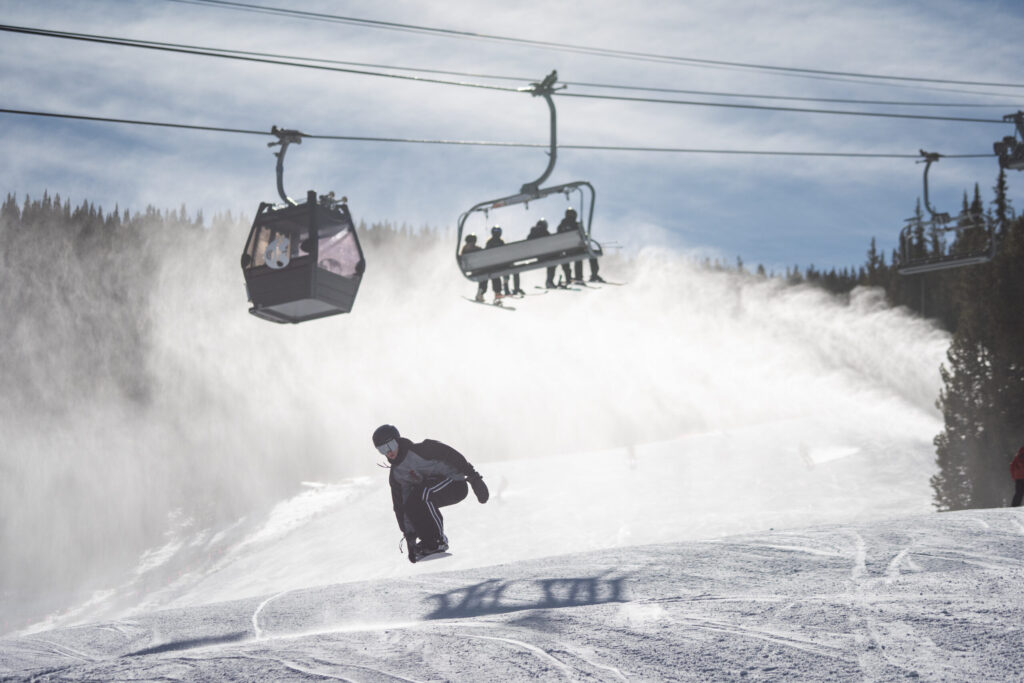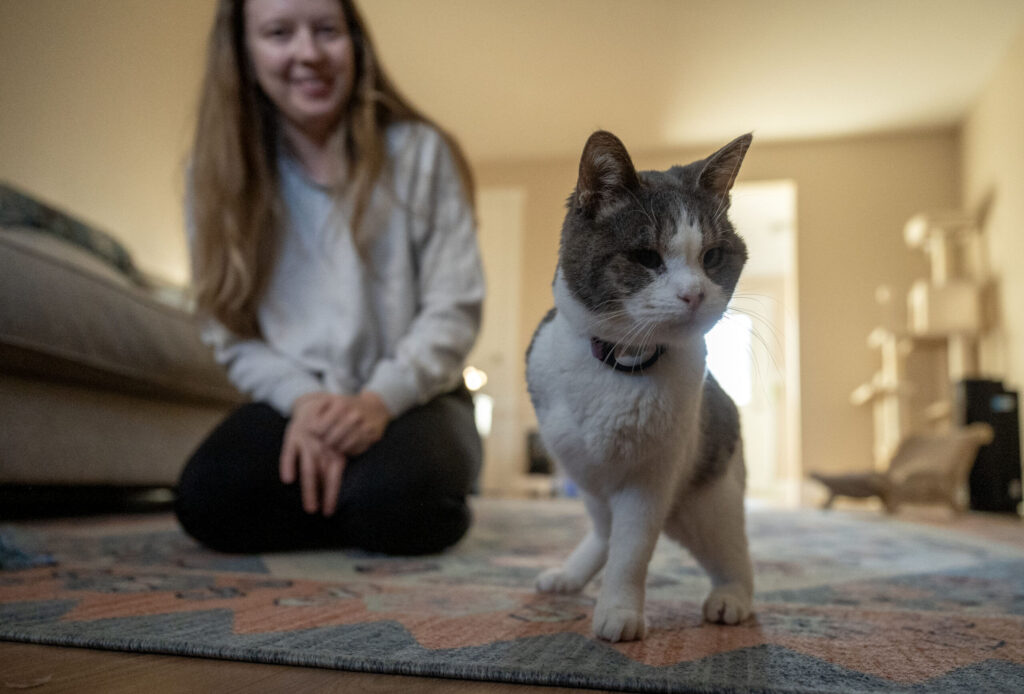A scenic site is restored in Colorado — but tensions linger
Earlier this summer around a small body of water in a small Colorado village, locals gathered and celebrated.
“It was a big celebration by Twin Lakes’ standards,” said one of those locals, Rick Akin. “I think there was 20 people and four dogs.”
The occasion was the return of that body of water.
It’s been known as Barn Pond, for the historic barn it has reflected along with the surrounding peaks — long admired by travelers on this end of Independence Pass. The idyllic scene has been widely photographed and promoted for tourism over generations. It’s been a scene of lunch stops, dog walks and weddings, a scene of inspiration for artists setting up easels.
But the scene was much different last summer.
Akin was among Twin Lakes locals who noticed the waterway they knew as Berrier Creek — running by the cabin he and his wife have owned since 2007 and onward to the village — had gone dry. He and others didn’t think much of it.
“It didn’t really register with people what was happening,” Akin recalled.
Until Barn Pond, too, went dry.

In Twin Lakes, Barn Pond had been drained before a local initiative led to it being refilled this summer.
The so-called Berrier Creek had fed the pond, descending from the split of a channel beyond. It turned out the channel had been altered, the opposite split deepened.
In what became not the first but the most public spat between locals and the man overseeing a luxury development nearby, AngelView at Twin Lakes, Alan Elias reasoned the move was in following a court decree to meet water measuring obligations. Elias was in the right by Colorado’s Division of Water Resources, as he hoped to make clear during a town hall attended by an agency representative.
But he was in the wrong by others in attendance.
“The locals were exceedingly upset,” Akin said. “I mean, this is the centerpiece of the community, and it was just gone.”
Elias sympathized, he said in written responses to The Gazette. Initially, he called himself “fully supportive of efforts to preserve Barn Pond” — even offering $10,000 to fund a technical study, he said.
“However,” Elias continued, “upon discovering that the pond is not historic and may actually be an environmental hazard and source of toxic substances, I can no longer continue to advocate for its future in good conscience.”
The Division of Water Resources indeed determined “Berrier Creek” to be a manmade ditch — unnatural and not particularly historic, like the pond that it fed.

A barn reflects in Barn Pond on a calm morning Thursday, July 31, 2025. Water has returned to the pond after it was left dry last summer when the water from Berrier Creek was deverted to a luxury development nearby, AngelView at Twin Lakes.
Accompanied by pictures showing the detritus, an agency report read: “The downstream face of the ‘Barn Pond’ dam consisted of tires stacked in a pyramid formation filled with native grasses similar to flower pots as well as scrap metal including bed springs, sheet metal and vehicle parts.”
The 24-page report made no mention of environmental hazard. But a website Elias oversaw, barnpondfacts.com, did: “Old tires can leach petrochemicals, rubber compounds and heavy metals (including mercury and lead) into the soil” — posing risks downstream.
Akin and other advocates were unconvinced. “Alan has made this kind of allegation repeatedly, but I have yet to see any sort of evidence or expert opinion,” Akin said.
And he and others were unconvinced of their creek being called a ditch. While the Division of Water Resources’ report includes a 1891 plat map indicating a “water supply ditch,” Akin has pointed to earlier surveys that he says prove a natural flow.
At any rate, “the onus was on us to bring it back,” Akin said.
He and others rallied around a nonprofit, Friends of Berrier Creek and Barn Pond. And off they ventured into the complicated world of Colorado water rights.
As a career attorney, “my knowledge was slightly above zero,” Akin said.
His knowledge increased over the span of a year. A water lawyer was hired, along with engineers. A substitute water supply plan would have to be approved by the Division of Water Resources, and a permit would have to be granted by the Army Corps of Engineers for infrastructure including a culvert, headgate and measuring flume. But first: A water right to be obtained.
Elsewhere in the Arkansas River Basin, the city of Pueblo was identified for having 20 acre feet of water to sell. Akin’s nonprofit secured the rights at an auction. Everything was cleared by May — except the creekbed.
“That creek had been dry for a year, so it was full of leaves and sticks and branches,” Akin said. “As soon as we got the water on, it was like an army descended. Everybody was out on the creek cleaning it up.”
Then came the celebration around the restored pond.
But “we’re not quite at the end yet,” Akin said.

The barn and mountains above Twin Lakes are reflected in Barn Pond on a calm morning Thursday, July 31, 2025. Water has returned to the pond after it was left dry last summer when the water from Berrier Creek was deverted to a luxury development nearby, AngelView at Twin Lakes. (The Gazette, Christian Murdock)
He anticipates going to court to seek a permanent right to water; a lease runs through April of next year. A permanent solution is required, though solutions typically move slow in water court, a Division of Water Resources representative stressed in an email.
The substitute water supply plan for the pond can be renewed up to five years, the representative noted. “However, the Friends of Berrier Creek should not wait until the expiration of that period to secure a long-term water supply and apply to the court,” as the process “takes some time to work through.”
In the meantime, Akin sounded confident in year-to-year leases.
“This is a tiny amount of water we’re talking about,” he said.
But still falling in the complicated “jigsaw” that is the Arkansas River Basin, he recognized. Within the basin where water rights exceed supply, evaporation is but one consideration among others to account for allocations and storage downstream.
The situation would be less complicated, Akin explained, if the pond and what he knows to be Berrier Creek were determined to be natural. If so, his understanding is that Elias’s diversions could be compromised — potentially reigniting tensions between the developer and locals.
“We will always reserve our legal rights, but our preference is to work with our neighbors — not against them,” Elias said in his written responses to The Gazette.
He said he “appreciate[d] that the team working to maintain Barn Pond is, for the most part, adhering to legal requirements,” adding: “My hope is that, moving forward, they will consult with appropriate environmental agencies — such as the EPA — to ensure that no contaminants are introduced into Twins Lakes or the broader watershed.”
Akin has insisted “the folks who need to know about this do know about it.” Elias has proposed a meeting “to try to develop a win-win situation,” he said.
He continued: “At the heart of any healthy community is a shared commitment to fair play, consistent standards and mutual respect.”
At the heart of Twin Lakes is Barn Pond — what locals indeed like to view as natural, Akin said.
Regarding a potential challenge to the manmade finding, “What matters more than anything is local pride,” Akin said.
Pride was felt at that small celebration around this small body of water.
“In the grand scheme of things this doesn’t sound like a big deal,” Akin said. “But for the folks in Twin Lakes, this is a really, really big deal.”













